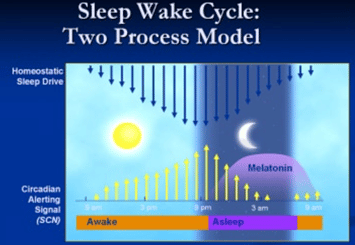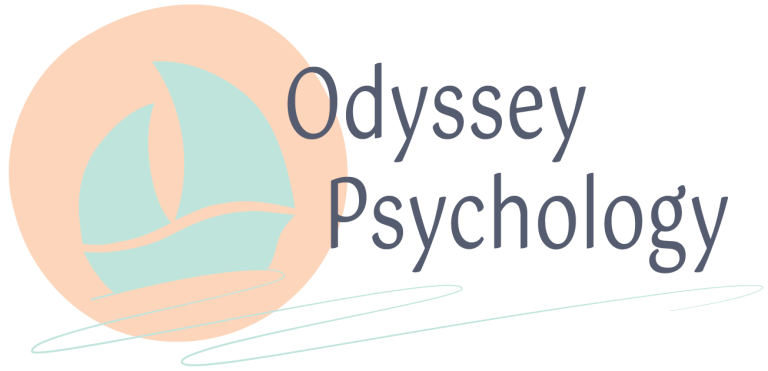Key Points
Three main processes regulate sleep.
- Circadian rhythms – the about 24-hour body clock cycle that influences many hormonal systems in your body, including melatonin. Circadian rhythms are regulated by sunlight entering your eyes. Getting morning sunlight and avoiding bright light at night are important ways to improve sleep problems and help with insomnia.
- Sleep pressure – a molecule called adenosine builds up in your brain during waking hours and contributes to tiredness. The longer you are awake, the more tired you become. Caffeine blocks the build-up of adenosine for a short while. Adenosine is cleared from your brain while you sleep, reducing sleep pressure.
- Arousal and stress – low brain arousal is associated with sleep and high brain arousal is associated with wakefulness; they are mutually exclusive. The relationship between sleep and stress is bidirectional, meaning stress contributes to sleep problems and insomnia, while poor sleep quality increases stress.
How Sleep is Regulated
You may have heard the term ‘sleep hygiene’ before and are aware of sleep hygiene strategies that promote good sleep and prevent sleep problems and insomnia. You might even already be following some of these strategies. However, following sleep hygiene strategies without understanding why you are doing so may lead to shortcuts, mistakes, or lack of motivation over time, resulting in sleep problems and insomnia.
This article aims to provide you with a basic understanding of how sleep is regulated, which is essential for successfully dealing with sleep difficulties and insomnia in the long-term.
This article will discuss three main processes that regulate the sleep-wake cycle. The first two processes are referred to as the “Two Process-Model of Sleep” which has wide agreement amongst researchers and professionals in the sleep field.1 The third process relates to arousal and stress.

See reference list for image reference:2
Process One: Light Exposure and Circadian Rhythms
Every cell in your body runs on an internal timing system known as circadian rhythms which is roughly 24 hours long. This system regulates your sleep-wake cycle and various other daily bodily processes such as hormone section,3 mood,4 and metabolism.5
The word ‘circadian’ comes from the Latin roots circa (about) and diem (day) – ‘about a day’. Human circadian rhythms typically extend beyond 24 hours by about 10-20 minutes, though individual variations exist. You might be thinking that if our circadian rhythms are responsible for regulating so many important biological processes, then surely there must be some mechanism to correct for its irregularity. If so, you would be correct.
Your circadian rhythms are calibrated daily so the timing of the cycle is never thrown out by much. Your circadian rhythms are calibrated by a small part of the brain called the suprachiasmatic nucleus which senses sunlight entering your eyes.6 Early morning sunlight tells your brain that it is daytime and to start the clock. This is important, as sunlight is the only way to tell your brain the time of day it is. Consciously knowing that it is daytime is not enough. For example, if you wake up at 6:00 am but don’t leave the house for the first time until 11:00 am, although you consciously know the sun has been up for a few hours, your brain doesn’t know this. Your brain only knows it is morning once your eyes are exposed to sunlight which then starts your circadian rhythms body clock.
Melatonin is known as the sleepiness hormone, and it is responsible for the drowsy feeling you feel at night before falling asleep. Light suppresses melatonin release, so it is only released in your brain in darkness. Melatonin is easily suppressed by light, meaning that house lights and bright electronic screens at night are enough to reduce melatonin secretion and signal to our brain that it is still daytime.6
Your circadian rhythms can adjust to changes over time (e.g., travelling to other time zones) but remains sensitive to changes in sleep/wake routine of about 30 minutes. Sleep and wake routines that vary by more than 30 minutes likely contribute to circadian rhythms dysregulation and sleep problems. One of the most vital sleep hygiene strategies to improve sleep is to set regular sleep and wake times and get early morning sun exposure upon waking. Left unchecked, small daily disruptions to your circadian rhythms may eventually result in worsening sleep problems and insomnia.
Process Two: Adenosine and Sleep Pressure
The second process that regulates sleep is intuitive and is probably something you already know. This process is referred to as sleep pressure or sleep propensity which builds the longer you are awake. In other words, the longer you stay awake for, the more tired you feel.
Your bodies keep track of your wakefulness using a molecule called adenosine triphosphate (ATP). ATP is made up of one adenosine molecule attached to three phosphate molecules. Our cells use ATP as the primary energy currency of cells. As we use energy throughout the day, ATP is broken down leaving the remaining adenosine molecules to accumulate in your brain. Adenosine attaches to neuron (i.e., brain cell) receptors resulting in the suppression of wake-promoting neurons and leading to progressive tiredness throughout the day.7,8 Once you sleep, however, adenosine is cleared from your brain and the process starts anew the next day.
Caffeine
We can’t talk about adenosine without talking about caffeine. Caffeine is a similar-shaped molecule to adenosine and competes for the same neuron receptors in the brain as adenosine does. This means that caffeine blocks the accumulation of adenosine in the brain, for a short time at least.8 This is one of the reasons why you feel less fatigued and more alert after drinking coffee.9 Caffeine can stay in your system for up to 36 hours after initial consumption.10 It can continue to impact your sleep quality regardless of whether you feel tired. Therefore, it is recommended to limit caffeine intake to the morning to avoid sleep problems and prevent insomnia.
To learn more about how caffeine affects sleep, check out this article.
Process Three: Arousal and Stress
The third process that regulates your sleep-wake cycle is your arousal and stress system. Arousal is a relative term referring to changes in brain activity.11 Subjectively, arousal is experienced as a heightened state of attention, alertness, and excitability. The term stress used here refers to perceived stress (i.e., demands from the environment exceeding the individuals’ resources and ability) and physiological stress (e.g., sleep deprivation, hunger, and unpleasant emotional states).
There is a large overlap between the brain systems that regulate sleep, arousal, and stress.12 In many ways, they are two sides of the same coin in that low brain arousal is associated with sleep and high brain arousal is associated with wakefulness. Given that stress involves physiological activation and arousal, it naturally inhibits sleep. Brain arousal also includes any stimulating activities, such as exciting books or movies, arguments, and study or work. It is best to avoid these activities before going to bed to prevent sleep problems.
To complicate the matter, the relationship between sleep and stress is bidirectional, in that stress (perceived or physiological stress) contributes to sleep problems and insomnia, and poor sleep quality increases physiological stress. It has also been shown that deep sleep (or slow wave sleep) inhibits the body’s main stress response system – the hypothalamic-pituitary-adrenal (HPA) axis. Whereas activation of the HPA system can lead to arousal and sleep disturbances.13
Due to the bidirectional and cyclic nature of your sleep and stress systems, it is not difficult to see how disrupted sleep patterns can quickly spiral out of control and result in insomnia: a stressful life event leads to sleep problems which impact alertness and emotional coping the next day, leading to further stress and sleep disturbances, and so on, and so on.
Summary
After reading this article you now have a basic understanding of the three core mechanisms that regulate sleep – circadian rhythms, sleep pressure, and arousal and stress. This knowledge will help you better understand and implement sleep hygiene strategies to resolve sleep problems and insomnia.
About the author

Tyrone is a clinical psychologist, nutritionist, and qualified chef with an interest in holistic health and wellbeing. Tyrone’s special interests include eating behaviour, disordered eating, weight management, insomnia, and anxiety.
References
1. Borbély, A. A. (1982). A two process model of sleep regulation. Human Neurobiology, 1(3), 195-204. Link to text.
2. Chawla, J, et al., (2018). What are the homeostatic and circadian processes regulating sleep? WebMD LLC. Link to website for image.
3. Tonsfeldt, K. J., & Chappell, P. E. (2012). Clocks on top: the role of the circadian clock in the hypothalamic and pituitary regulation of endocrine physiology. Molecular and Cellular Endocrinology, 349(1), 3-12. Link to text.
4. McClung, C. A. (2013). How might circadian rhythms control mood? Let me count the ways… Biological Psychiatry, 74(4), 242-249. Link to text.
5. Rutter, J., Reick, M., & McKnight, S. L. (2002). Metabolism and the control of circadian rhythms. Annual Review of Biochemistry, 71(1), 307-331. Link to text.
6. Mistlberger, R. (2015). Sleep and circadian rhythms: reciprocal partners in the regulation of physiology and behavior. Circadian Medicine, 57-79. Link to text.
7. Basheer, R., Strecker, R. E., Thakkar, M. M., & McCarley, R. W. (2004). Adenosine and sleep–wake regulation. Progress in Neurobiology, 73(6), 379-396. Link to text.
8. Lazarus, M., Chen, J. F., Huang, Z. L., Urade, Y., & Fredholm, B. B. (2017). Adenosine and sleep. Sleep-wake Neurobiology and Pharmacology, 359-381. Link to text.
9. Drake, C., Roehrs, T., Shambroom, J., & Roth, T. (2013). Caffeine effects on sleep taken 0, 3, or 6 hours before going to bed. Journal of Clinical Sleep Medicine, 9(11), 1195-1200. Link to text.
10. Lin, Y. S., Weibel, J., Landolt, H. P., Santini, F., Garbazza, C., Kistler, J., … & Reichert, C. F. (2022). Time to recover from daily caffeine intake. Frontiers in Nutrition, 8, 787225. Link to text.
11. Halász, P., Terzano, M., Parrino, L., & Bódizs, R. (2004). The nature of arousal in sleep. Journal of Sleep Research, 13(1), 1-23. Link to text.
12. Sanford, L. D., Suchecki, D., & Meerlo, P. (2015). Stress, arousal, and sleep. Sleep, Neuronal Plasticity and Brain Function, 379-410. Link to text.
13. Nicolaides, N. C., Vgontzas, A. N., Kritikou, I., & Chrousos, G. (2020). HPA axis and sleep. Endotext [Internet]. Link to text.





One Response